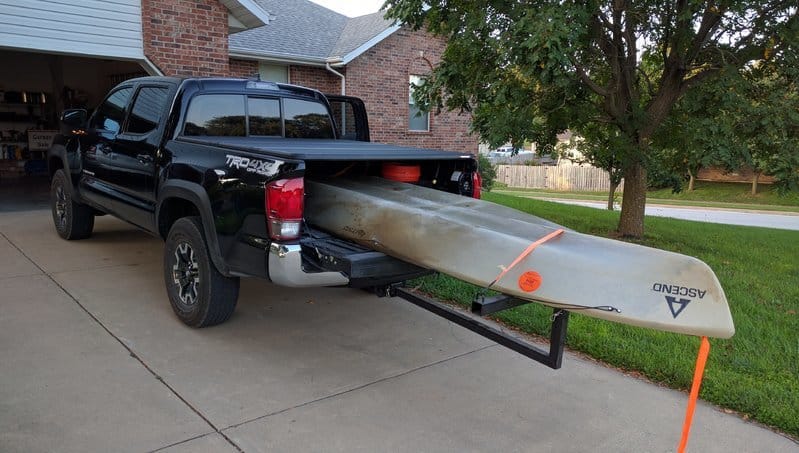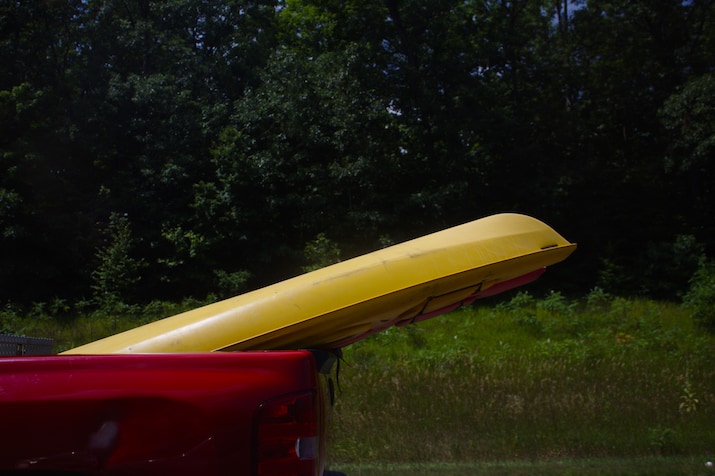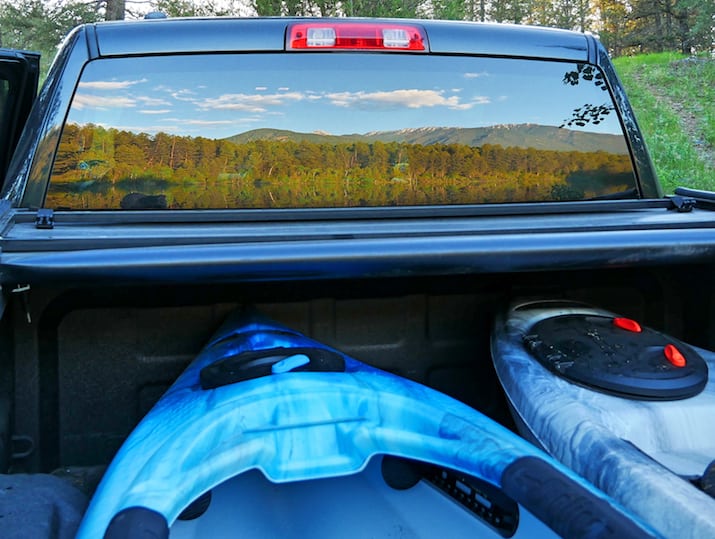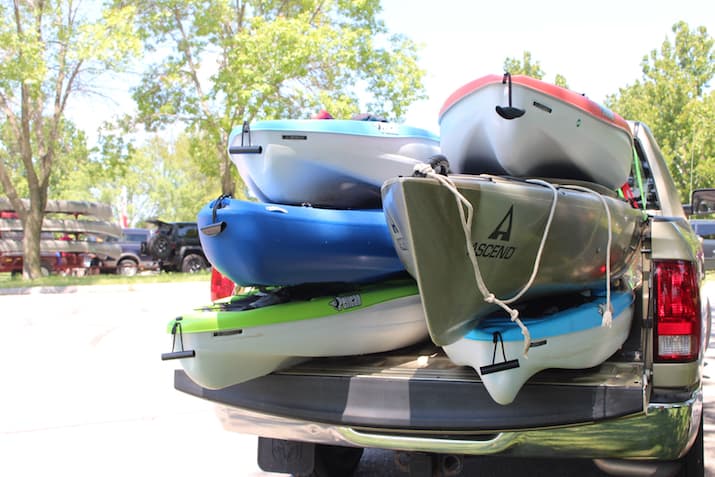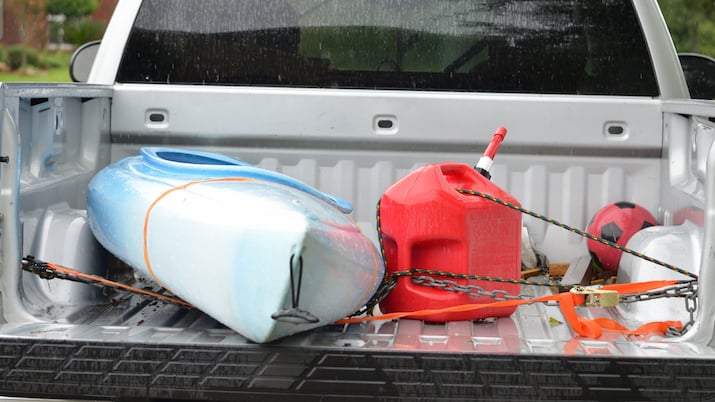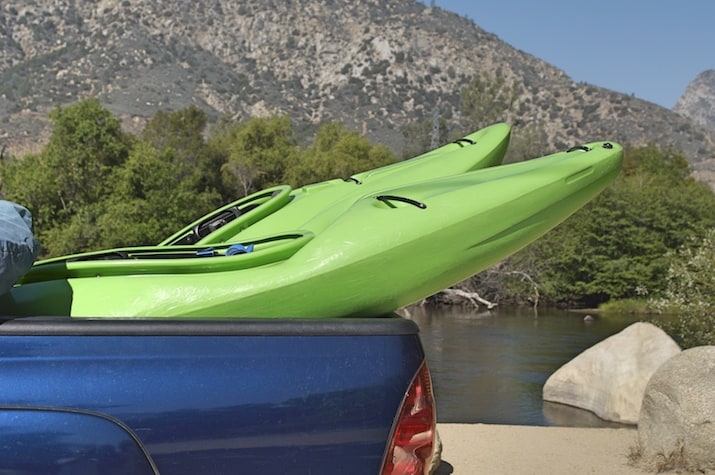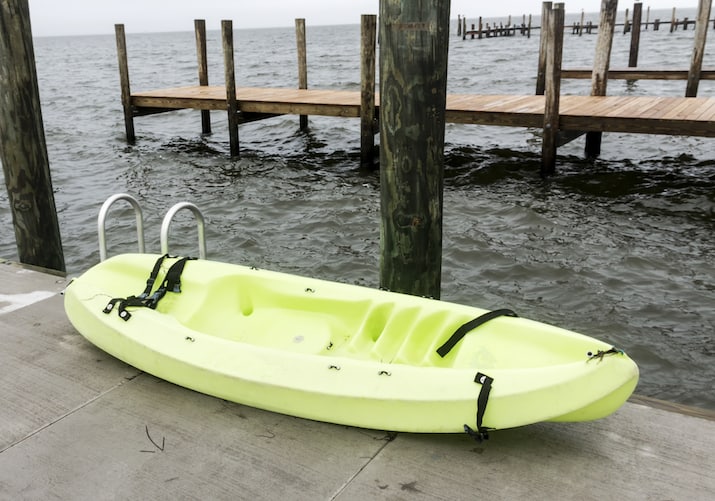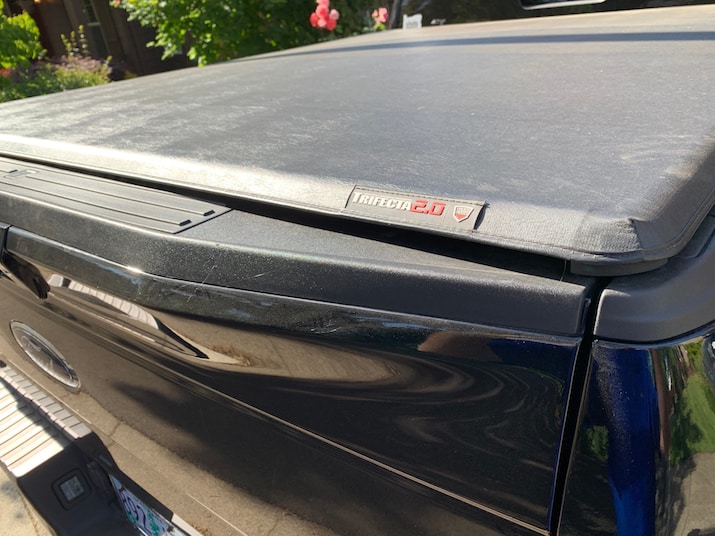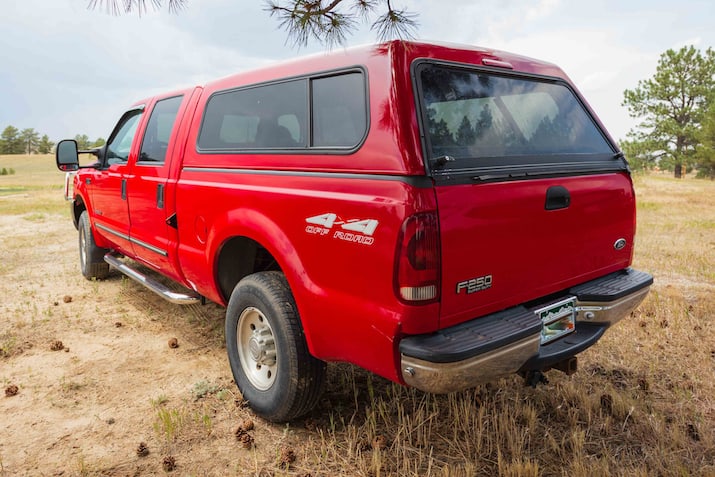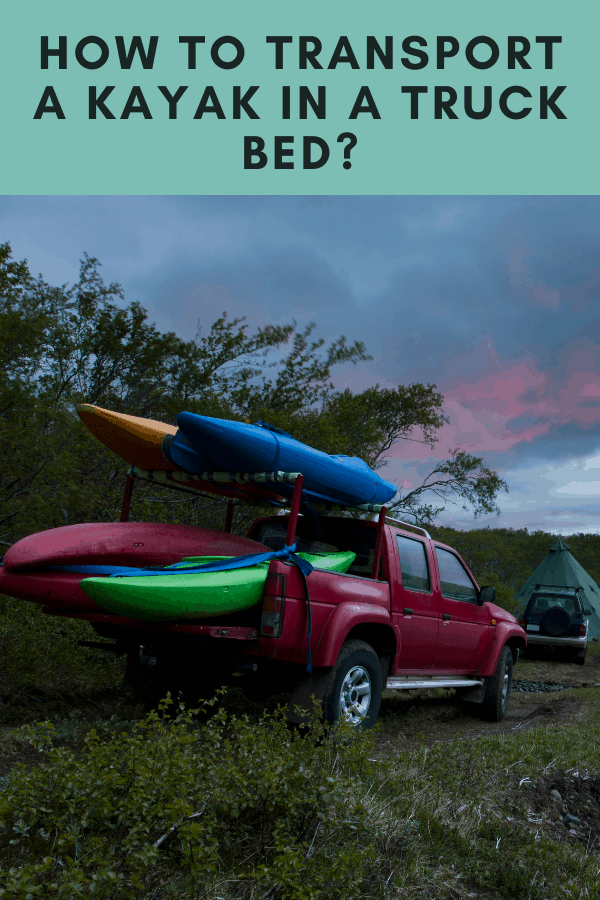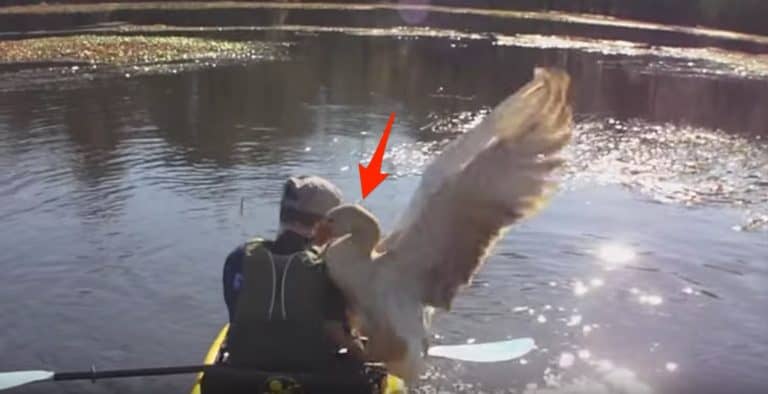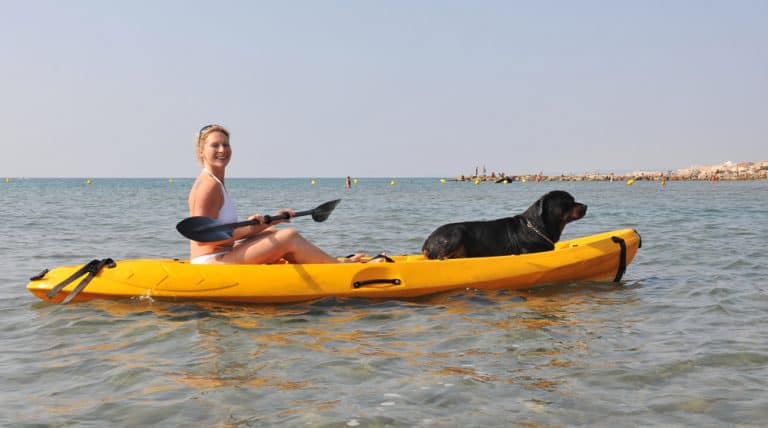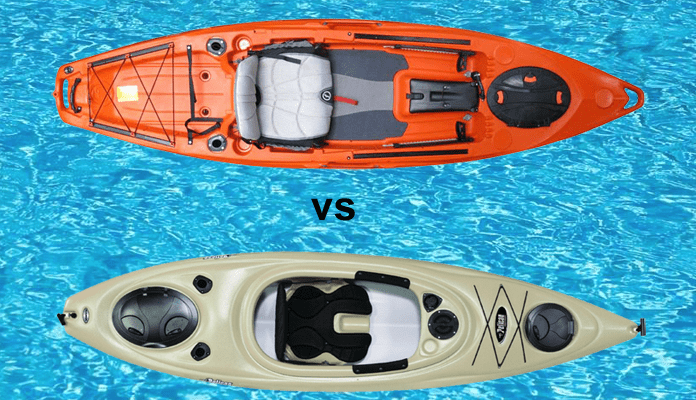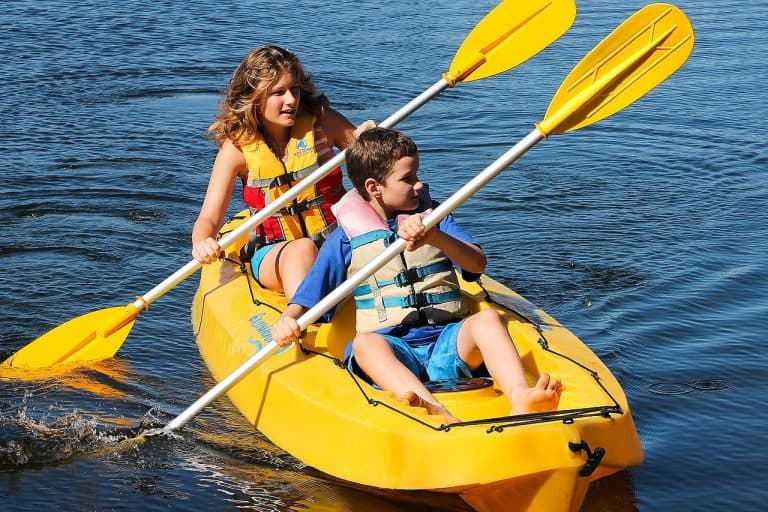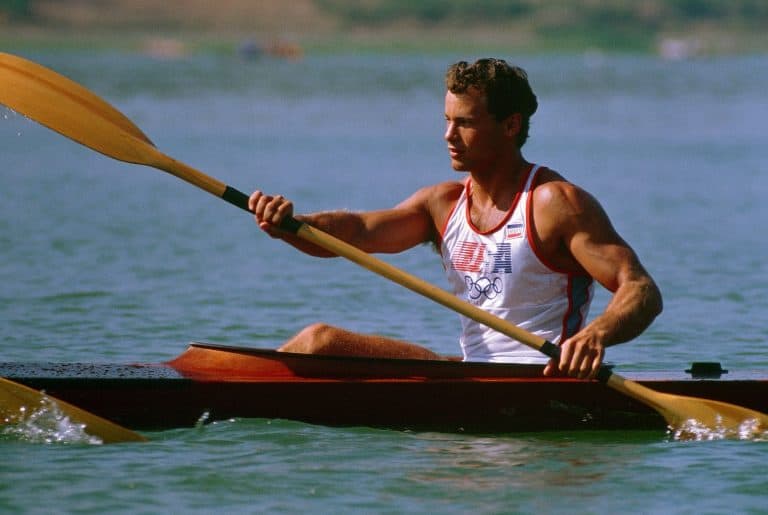There are many ways to get the job done when you need to transport a kayak. If you have a truck with or without a camper shell installed, you will need to know how to transport a kayak in a truck bed.
The main issue with this transportation strategy is that most kayaks are going to be quite a bit longer than the length of your truck bed. Even an eight-foot truck bed will sometimes be less than half of the length of the longer touring kayaks out there.
This means you will need to secure your kayak properly to make sure the weight is supported while you are driving. Plus, you will need to alert other drivers to the presence of a long object extending out past the bumper of your truck.
In this guide, we will provide a number of useful tips to help you transport a kayak in a truck bed safely. We will also suggest some limitations that might keep you from transporting a kayak in a truck bed safely.
So, let’s get started!
How To Transport A Kayak In A Truck Bed
PC Andy Chappell via Shutterstock
The two main ways to transport a kayak in a truck bed are with the tailgate open or closed. Of course, this is assuming that the top of your truck bed is open and you do not have a tonneau cover or camper shell installed.
If you do, we will still cover some tips for transporting a kayak in those fashions below. However, no matter the exact setup of your truck bed, you should be sure that at least half of the length of your kayak is supported by the bed itself.
That means you can use the length of your truck bed to determine the maximum length of kayak you can transport safely. For example, you should keep your kayak length at or below about 11 feet if you have a 5’6” truck bed.
The recommended limits, therefore, for six-foot and eight-foot truck beds, then, would be 12 feet and 16 feet, respectively.
How To Transport A Kayak In An Open Truck Bed
PC Kailey Knetzer via Shutterstock
If the bed of your truck doesn’t have a tonneau cover or camper shell installed over it, you will have an easier time loading in your kayak. Here are a few tips that will help you transport your kayak safely.
Tailgate Up or Down
The first choice you will need to make is whether you want to transport your kayak with the tailgate up or down. Both choices are feasible and can be done safely if you secure your kayak properly, but there are pros and cons to both.
Transporting your kayak with your tailgate down can make it easier to simply slide your kayak out when you arrive at your destination. It also allows you to keep your kayak aligned parallel to your truck, which eliminates the risk of it extending too far into a neighboring lane of traffic.
That being said, transporting a kayak with your tailgate down pretty much eliminates your ability to transport other kayak gear and accessories in the bed of your truck as well. If you have plenty of backseat storage space, this might not be an issue.
That said, transporting your kayak with your tailgate up will allow you to retain the ability to transport other gear in the bed of your truck safely. This is a preferred strategy if you need your backseat clear for passengers, for example.
Cockpit Up Or Down
The next choice is whether you want to load your kayak in with the cockpit facing up or down. There really isn’t one preferred way that is vastly safer and more secure than the other, but there are some advantages and disadvantages to each.
Loading your kayak in with the cockpit facing up will make it easier to slide your kayak out of the bed of your truck once you reach your destination and loosen the straps. However, some folks believe that securing a kayak in a truck bed with the smooth hull facing down also makes your kayak more likely to slide or move around while you are driving.
On the other hand, you can load your kayak in with the cockpit facing down, which can help to eliminate the possibility of it sliding around while you drive. However, you will have to flip it over during both the loading and unloading process.
In addition, we have found that loading a kayak into your truck bed with the cockpit facing down can make the seat back more susceptible to damage. If your kayak does happen to shift while you are driving, certain components are more likely to be pinched or torn when the cockpit is facing down.
So, as you might imagine, our recommendation would be to load your kayak in with the cockpit facing up. As long as you secure your straps properly, you should be able to mitigate that added risk of your kayak sliding around.
Securing A Kayak With Your Tailgate Down
PC BDoss928 via Shutterstock
If you want to load your kayak in with the tailgate down, go ahead and load it in so that it is parallel with your truck. From there, identify the tie-down points in the corners of your truck bed.
Almost all trucks should have them and they are usually D-shaped pieces of metal with plenty of room to thread a cam strap through. Yes, cam straps are fine for loading a kayak into your truck bed.
They can be pulled rather tightly without worry about bending or denting the body of your kayak. The risk with ratchet straps is that you could tighten them down too much and damage your kayak.
In terms of strap length, you will probably need a minimum length of 15 feet to strap your kayak down safely and you will need two straps for the front and back of your kayak.
For the strap towards the back of your truck, you can simply thread it through the D-ring at one corner, pull it across the top of your kayak, thread it through the D-ring at the opposite corner, and then pull the strap back across and thread it through the cam buckle.
Pull it down snug but don’t yank on it too hard just yet. You will want to secure the other strap before you fully tighten them both down.
For the strap towards the front of your truck bed, you will want to run the strap through the D-ring at one corner to start (just like you did with the other strap). This is where things get a little different, however.
Because the end of your kayak that you have loaded into the front of your truck bed can be quite narrow (doesn’t matter whether it is the bow or stern), you will want to find a hard point on top of the kayak to thread your strap through.
Look for a point that is about one-third of the way fore or aft of the bow or stern of your kayak. Thread your strap through this anchor point and then thread it through the D-ring in the opposite corner of your truck bed.
Then, pull the strap back over your kayak and through the cam buckle before securing it down tightly. The result should be a triangular shape between the D-rings at the front corners of your truck bed and the anchor point you chose on top of your kayak.
Once you have accomplished this, you can go back and tighten down the first strap at the back of your truck bed.
Securing A Kayak With Your Tailgate Up
PC sirtravelalot via Shutterstock
If you are going to secure a kayak in your truck bed with the tailgate up, the best way to do so is actually to angle your kayak. Place the bow of your kayak into one of the front corners of your truck bed and allow the stern to hang out over the opposite corner at the rear.
From here, you are going to use the same D-rings that we suggested using in the previous example. Those 15-foot cam straps will work too.
At the front of your truck bed, thread your strap through the D-ring and then run it up and over your kayak. Just like with the previous method, you will want to find an anchor point on the top of your kayak to thread your strap through.
Once you have found that anchor point, thread your strap through and then pull it under your kayak and back through the same D-ring you used originally. Then thread the strap through the cam buckle and pull it down snug.
Don’t overtighten it just yet, as we will come back and give it another pull on a second pass. This strategy will pull your kayak up and into the front corner of your truck bed.
As an alternative, you can also thread the strap through the D-ring at the opposite corner in the front of your truck bed to create the same triangle shape we outlined in the previous step.
Then, move to the back of your truck bed and thread your second strap through the D-ring on the same side as the stern of your kayak. Run the strap up and over your kayak and then across and through the D-ring at the opposite corner at the back of your truck bed.
Then pull the strap back towards your kayak and thread it through the cam buckle. Pull it down tightly and then go back and give an extra tug on the first strap that you put in place at the front of your truck bed.
From there, go ahead and try to move your kayak from side to side. If it can move at all, you may need to tighten it down further or reconsider your anchor points entirely.
A Note On Choosing Anchor Points On Your Kayak
PC Woodys Photos via Shutterstock
When you are looking for a place on your kayak to thread your cam straps through, choose an opening that is either bolted on, screwed down, or plastic welded into the body of the kayak. Avoid bungee straps because they will naturally have too much stretch that will allow your kayak to move around.
If you have a sit on top kayak, the scupper holes that naturally allow water to drain from the cockpit are a great choice for threading straps through before securing them down.
Many kayaks also have smaller D-rings on them for securing fishing accessories and other gear. These D-rings will be smaller than the ones in your truck bed, but they should still be wide enough to fit your cam strap through.
Aside from D-rings, you can also use handles that are plastic welded or screwed into the body of your kayak. This is perfect if your kayak is equipped with handles on the gunwales at the center of the kayak.
In some cases, you may even be able to use the seatback in the cockpit of your kayak as an anchor point. You just need to make sure that there is no side-to-side movement in that seatback before you use it as an anchor point.
Flagging Your Kayak To Alert Other Drivers
PC Milkovasa via Shutterstock
Whether you choose to transport a kayak with your tailgate up or down, your kayak will still be sticking out past your truck’s original bumper. In most states, this will require you to alert other drivers of your vehicle’s extended length.
The simplest thing to do is to tie a bright red rag to the toggle handle at the rear of your kayak. Red is the preferred color, but most states will allow you to use any bright color that is designed to get the attention of other drivers.
Because some kayaks are bright colors, however, just make sure that the flag color you choose isn’t the same as your kayak’s color. This will risk it blending in and reduce the likelihood of other drivers seeing it clearly.
How To Transport A Kayak In A Truck Bed With Tonneau Cover
PC Jason Renfrow via Shutterstock
If you have a tonneau cover installed on your truck bed, it should not hinder your ability to transport a kayak. You will just need to know which of these methods is best suited to your specific truck.
Most tonneau cover owners transport their kayak with the tailgate open. This allows you to keep the tonneau cover in place and it also provides a bit of weather protection as you are driving.
That being said, you should be careful to avoid transporting other gear in a truck bed with the tailgate open, as the risk of losing that gear is just too high. That is why some tonneau cover owners use a different strategy.
Many tonneau covers feature a bi-fold or tri-fold design. Depending on the exact design of your cover, you may be able to fold it back and fit your kayak in at an angle, which will allow you to close your tailgate.
If you can make this work, it means that you will retain the ability to store kayaking gear in the bed of your truck along with your kayak. Just don’t think that your tonneau cover alone will be enough to hold your kayak in place.
Some tonneau cover owners get away with not strapping their kayak down, but that is usually only for traveling short distances. Even if you get your kayak into your truck bed sideways with a tonneau cover, we recommend strapping it down just like you would if you did not have one of these covers installed.
How To Transport A Kayak In A Truck Bed With Camper Shell
PC Patrish Jackson via Shutterstock
For truck owners with a camper shell installed, it may be a little bit more difficult to get your kayak to fit in sideways without it pushing up against the side of your camper shell. That is not to say that it is impossible, but most camper shell owners will still transport their kayak with the tailgate down.
To do so, you would simply use the same method as we outlined above, but you should be able to flip the upper window on the camper shell closed once you secure your kayak into the bed.
If you have a sleeping platform installed in the bed of your truck (and it is high enough to fit your kayak completely underneath), you may even be able to store other gear above the sleeping platform once you close that upper window.
This will give you additional covered storage space while still allowing you to keep the back seat of your truck free. However, the main problem with this method is reaching all the way into the front of your truck bed to secure that forward strap.
So, you can also explore leaving that upper window up and closing the tailgate. Then, you will need to angle your kayak and strap it down to the corners of your truck bed at the D-ring anchor points.
If you are going to be traveling a long distance, you may even consider pulling your camper shell’s rear window down as far as you can and then securing it with shorter cam straps.
The window won’t close all the way, but closing it as far as possible will give your entire truck bed more security and keep debris from flying in. Just make sure you place a towel or some other type of padding between the window and the top of your kayak if you try this approach.
An Accessory For Easier Truck Bed Kayak Transportation
One of the biggest drawbacks of transporting a kayak in a truck bed is that it is not the best approach for longer kayaks. If you do have a longer kayak, consider adding this accessory to your arsenal to help you more easily transport a kayak in a truck bed.
Truck Bed Hitch Extender
A truck bed hitch extender allows you to support the weight of a longer kayak that feels a little unstable when loaded into your truck bed. This kind of extender is designed to slide into your truck’s square hitch receiver and there are many types out there that fit hitch receivers of varying sizes.
The best available models will allow you to adjust the width and height of the extender to match the width of your kayak and the height of your truck bed. When searching for a hitch extender, also make sure that it can support the full weight of your kayak.
Final Thoughts
PC rustycanuck via Shutterstock
The great part about smaller kayaks is that you don’t always need one of the best kayak roof racks to transport them. That said, once your kayak gets much over 15 or 16 feet in length, a roof rack is going to be the safest method of transportation.
Well, you could also look into a kayak trailer as well, but those are generally used for transporting a larger number of kayaks than one would typically have if using them purely for personal use.
Then, there are always inflatable kayaks, which give you the option of transporting them right in the bed of your truck without needing to strap or secure them down. These tend to be the best option for travelers or folks that don’t have a lot of extra space in their truck bed.
Whatever you fancy, there are plenty of options for you out there. If you are keeping it simple and loading a kayak into your truck bed, we hope you’ve enjoyed the tips and strategies we have provided in this guide.
As always, we wish you the best of luck on your upcoming kayak adventures. Where are you heading this kayak season? Let us know in the comments below!

